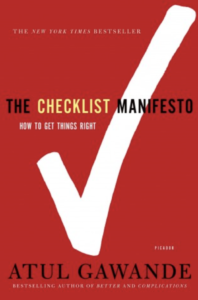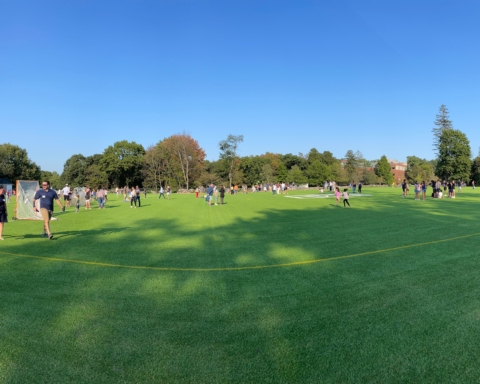Back to school is exciting; a new year full of possibilities, the return to friends and a structured schedule, the blissful reduction in arguments about sunscreen application! It’s also a transition, and transitions can be hard. As we pass the middle of September and catch our breath, it might be worth taking a look at how we can ease that transition and settle into the groove of things.
During the last week of August I just happened to be casually perusing the shelves of a bookstore (ok, ok, I was sourcing a required item for summer schoolwork last minute). While there, I noticed that the old “Self Help” section of the bookstore had been re-labeled “Personal Growth.” Perhaps it needed the rebranding. I once read a scathing opinion piece claiming that if self help books actually worked, the genre would put itself out of business. I disagree.
Dear fellow Parkies: I love Personal Growth books. I love them like I love cookbooks, because sometimes the entire volume is worth it for that one special recipe that makes life better. Since I enjoy single-handedly keeping the “personal growth” industry alive, here are some of the strategies I’ve learned over the years, in case your back to school transition — like ours — could use a little self-help:
Involve Kids in Problem Solving: Use the specific Collaborative Problem Solving strategies pioneered by Ross Greene or simply make an informal effort to ask for children’s input. Bring up the problem (we are regularly late leaving the house because you can’t find your favorite sweatshirt), listen to them (but it’s the most comfortable one!), state the requirements a solution has to meet (we need to leave on time with you in appropriately warm attire), and ask for their help with a solution (let’s add a hook near the door, get a second sweatshirt, or add it to the backpack the night before). Whether it’s the timing of homework completion or a shower schedule, having your child be part of the planning makes them feel respected and produces a solution that’s more likely to work for everyone in the family. Note: this is best done at a separate time from when the problem usually occurs!

Make a Checklist: Atul Gawande’s book The Checklist Manifesto has been useful in our household not only for making me personally grateful that no one dies if I miss an item on one of my lists (see the chapters on operating rooms and airplanes!) but also for reducing human error and arguments. A well-designed checklist can ensure that the sports gear is clean and packed on the correct nights or eliminate repetitive arguments about what needs to be accomplished before a child plays Minecraft. Checklists can reduce mental stress by offloading the need to remember things, and make it easier to share work. Seasonal checklists can be revised with any should-have-done items and saved for next year so you can join the ranks of elite guardians whose children have rain gear that fits and who actually remember that summer activity sign-ups precede the first snowfall.
Possible Items for a Back To School Checklist:
- Schedule dental/health/ortho appointments for kids on conference days
- Add all No School days to calendar and arrange for childcare if needed
- Check sizing on any athletic gear, Park Apparel and winter gear
- Add picture day to calendar, have child choose outfit, and schedule a haircut if needed
- Exchange contact info with families at your bus stop or in your neighborhood
Schedule a Power Hour: Author Gretchen Rubin wrote in a blog post in 2014 about setting aside a Power Hour to tackle “small, mildly unpleasant tasks” that she kept putting off. This concept appeals to me because one of the challenges of the back-to-school transition is that problems arise at moments we cannot solve them. If you’re already late for the bus, it’s not practical to brainstorm or implement a solution for your child’s consistent sock shortage. Nor is it safe or advisable to browse the internet for a new kid-friendly audiobook or podcast while you’re stuck in morning traffic listening to “narwhals, narwhals, swimming in the ocean, causing a commotion because they are so awesome” on repeat. Reserving an hour at some point to reflect on moments that were frustrating during the week can allow us to address problems when we actually have time to do so.
Cultivate Positive Moments: The start of the school year brings a lot of responsibilities for kids. As we help them build habits like completing homework and getting out the door on time with everything they need, our interactions include a higher percentage of reminders and requests. Psychologist John Gottman is known for his research showing that a 5:1 ratio of positive to negative interactions is predictive of the longevity and self-reported satisfaction of romantic partnerships. It feels intuitive to apply the heart of this advice to our relationships with our kids. Suggesting that our children change into a clean shirt for school, remember their water bottles, and brush their teeth “for real” don’t count as positive interactions. We can balance these interactions by making an extra effort to acknowledge things our kids are doing well, and by adding moments of connection and humor to our routine. Try telling them a joke every morning they can share with friends, or establishing a tradition of sharing a warm fuzzy or cold prickly moment each day at pick-up.
If any fellow community members have their own school-year life hacks, feel free to send them our way! We would love to share them in a future article. (We get by with a little help from our friends?)
We wish you wonderful new beginnings and a great school year!






